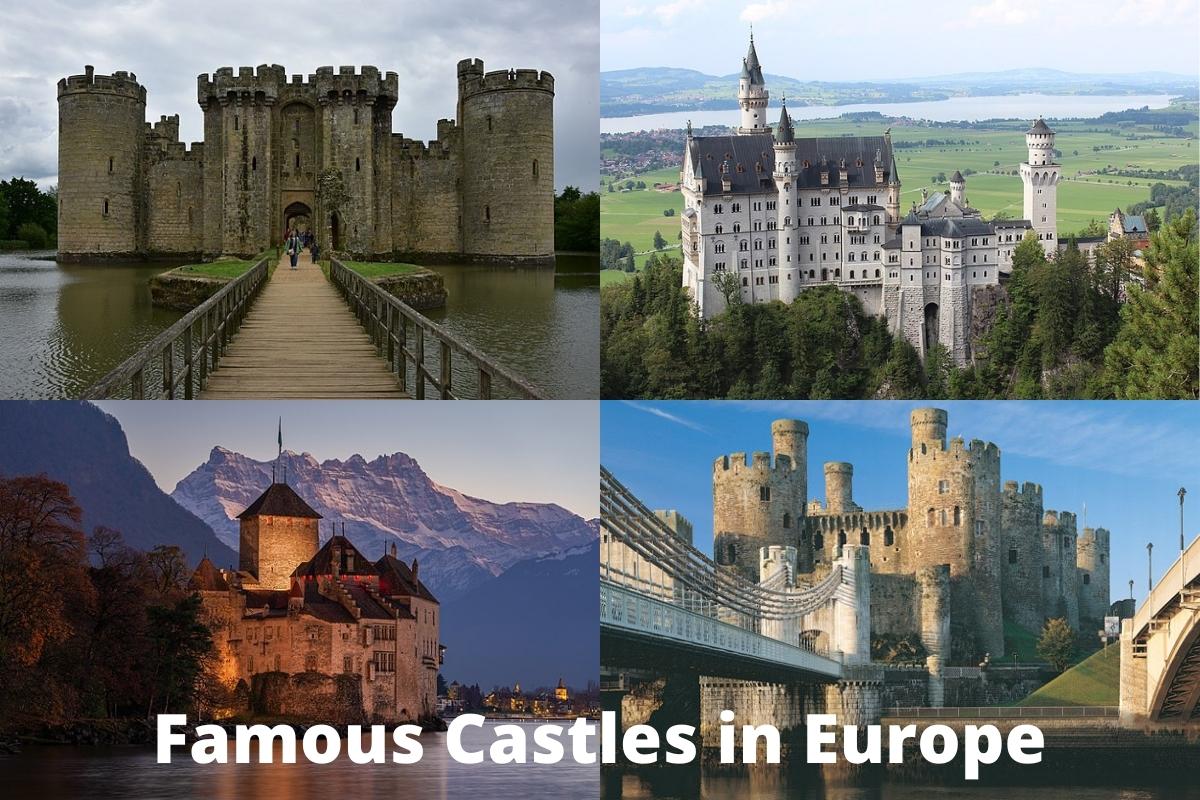One cannot talk about Europe without mentioning the beautiful castles populating this continent. Many fairy-tale movies and stories have been inspired by the castles we have today.
From the best architecture to the stunning landscapes and amazing stories about royal families, wars and battles fought over regions, and bloodlines, there is no better place to see castles than in Europe.
Even though times have changed, most castles were built to protect the nobility and also served as local government offices and political centers.
Let us break down some of the most famous castles in Europe as well as some interesting history surrounding them.
Famous Castles in Europe
1. Neuschwanstein Castle
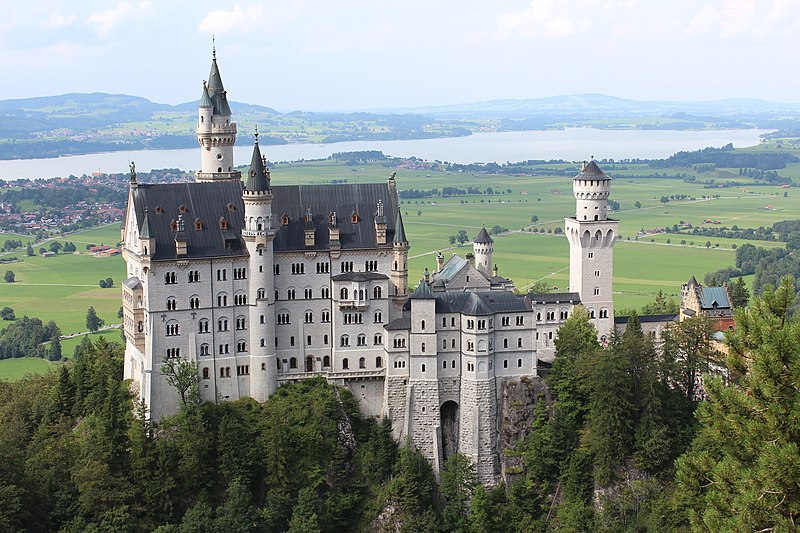
The Neuschwanstein Castle is the most famous castle in the world, attracting more than 1.4 million visitors every year. This 19th-century structure is located in Bavaria, Germany, and is the perfect symbol of power and beauty.
Featuring a Romanesque architectural style, it was completed in 1882 and commissioned by King Ludwig II, who would later retreat to the castle, following his unsuccessful reign.
King Ludwig lived in the castle in his last days and passed away in 1886. After his death, the castle was opened to the public.
Also Read: European Buildings
Even though the construction of the project was supposed to take three years, unrealistic deadlines and ambitious designs saw the project taking more than two decades to complete. But all that time was worth it, considering that the castle features magical designs and details.
This majestic structure has inspired castles in animations like ‘The Sleeping Beauty’ and ‘Cinderella’. If you want to experience this castle in its full beauty and splendor, visit it during fall when colorful foliage surrounds the castle.
2. Pena Palace
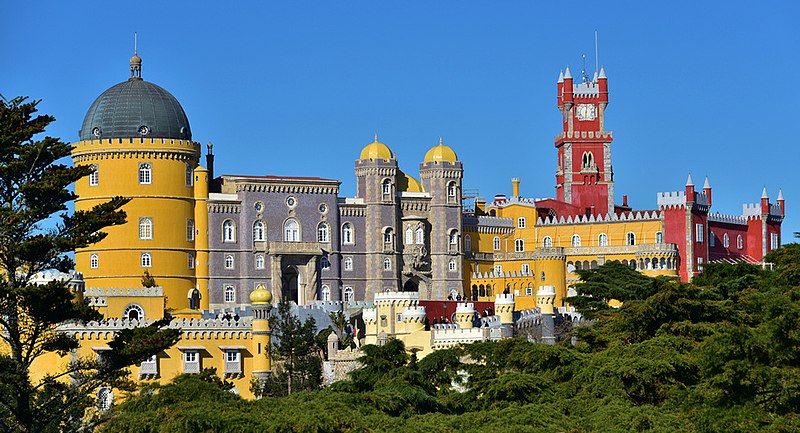
Although found in Portugal, the Pena Palace was inspired by German Romanticism architecture. It is situated on top of Sintra, a hill on the Portuguese Riviera.
Featuring yellow and pink towers, cartoonish gargoyles, and ornamental buttresses, it almost resembles a Disney castle. The castle was designed and created by King Ferdinand II, and the interiors are just as colorful as the exterior.
On a clear day, one can easily spot it from Lisbon due to its elevated position. This national monument is one of UNESCO’s world heritage sites and among the seven wonders of Portugal. Occasionally, government officials, including the president, use it for state occasions.
People who have been there admit that the scenic views from the top are something everyone should experience, even if once.
3. Hohenzollern Castle
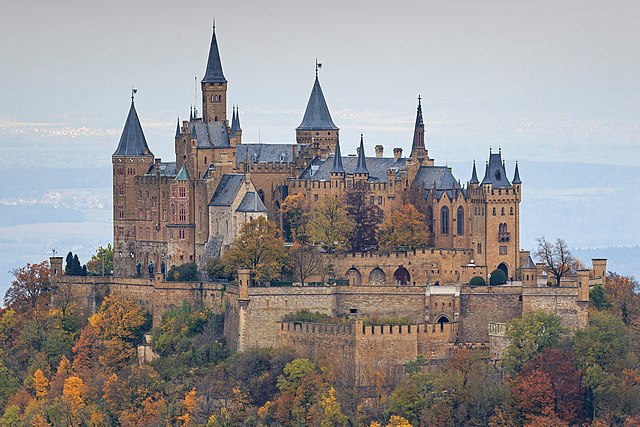
The Hohenzollern Castle is another famous castle found in Germany. Sitting on top of Mount Hohenzollern, this is the third structure to have been constructed in the same location after the first two castles were destroyed.
Construction of the castle started in 1850 as a family memorial by King Frederick William IV. The lead architect of this magnificent structure was called Friedrich August Stule, and he based his design on the English Gothic architectural style.
After the completion of the castle, it was not occupied regularly. Neither of the Hohenzollern Kaisers lived there permanently. It is only Prince William, the last Prussian Crown, who stayed there for an extended period after World War II, and he and his wife were buried there.
This impressive castle is made of three parts: the palatial buildings, military architecture, and gardens and chapels. It is also among the most visited castles in Europe, receiving about 350,000 visitors every year.
Every year, it hosts an annual summer camp for kids, and certain films like ‘A Cure for Wellness’ have been filmed here.
4. Edinburgh Castle
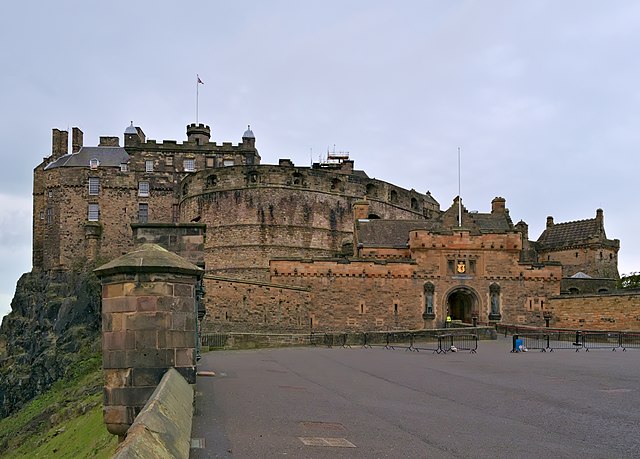
Edinburgh Castle sits on Castle Rock in Edinburgh, Scotland, and has been around since the Iron Age. In the 12th century, it served as a royal residence, but that role declined in the 15th century. By the 17th century, it was used by military barracks.
This castle has been involved in many historical conflicts, including the Anglo-Scottish Wars and the Jacobite rising in 1745. As a result, this historic fortress has changed hands many times over the centuries.
Also Read: Famous Landmarks in Scotland
A 2014 research found that during its 1100 history, the castle underwent 26 sieges, becoming the most attacked place in the world and most besieged in Great Britain.
It has been a home to kings and queens like King James IV and Queen Margaret and hosted several banquets and balls.
Edinburgh castle has an interesting building history. St. Margaret Chapel is the oldest part of the building, dating back to the 12th century.
Around 1510, James IV erected the Great Hall, and in the late 16th century, Regent Morton erected the Half Moon Battery. The National War Memorial was erected after World War I.
The castle is now a recognizable symbol, and you will find it in various places, including the coat of arms.
5. Chillon Castle
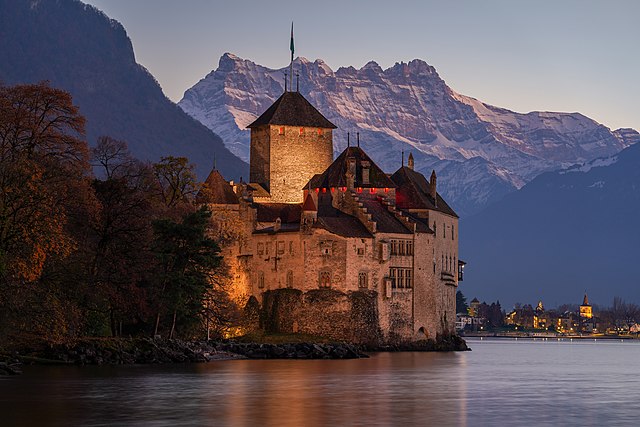
If this castle looks familiar, you may have seen a resembling structure in Disney’s animation, ‘The Little Mermaid’.
The Chillon Castle is built on Chillon island, Switzerland, close to the shores of Lake Geneva. The castle was placed in a strategic position so that the garrison could control access to the road leading to Italy and apply a toll.
Also Read: Famous Landmarks in Switzerland
This waterside castle has been around since the Bronze age and has had many uses, including a residence for counts, a fortress, and an arsenal prison. It has also been marked by three major periods in history, and these are the Savoy, the Bernese, and the Vaudois.
Chillon castle has three courtyards, 25 buildings, subterranean vaults, 14th-century paintings, and more than 300 items on display that were discovered during archaeological excavations.
6. Bodiam Castle
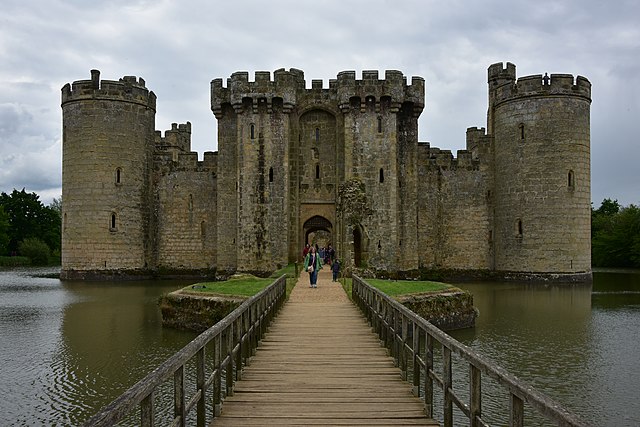
This 14th-century moated castle is located in England and was built by Sir Edward Dallingridge in 1385. Its main aim was to defend that area from the French invasion during the long conflict popularly called the Hundred Years’ War.
Although the castle was passed down by a few generations of Dalyngrigges initially, once that line became extinct, the castle was possessed by multiple people until 1925. This was when it was donated to the National Trust by Lord Curzon, the last owner.
Although the interior is a bit ruined, the castle consists of a chapel, gatehouse, coats of arms, a postern tower, a barbican, and a kitchen.
7. Conwy Castle
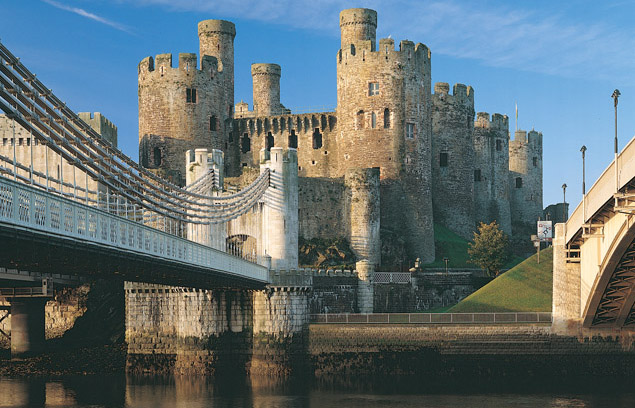
UNESCO describes Conwy Castle in Wales as a fine example of 13th to 14th-century military architecture. It was built between 1283 and 1287 by Edward I, and it remains Britain’s most significant and surviving medieval fortification.
Much of the stone used to build Conwy Castle was obtained from the surrounding coastal ridge. The castle is divided into both inner and outer wards and is protected by three gateways and 21 towers.
The internal parts house medieval royal apartments, which are still intact to date. You can see the King’s apartments and the Great Hall. From outside, you can enjoy the view of the sea and mountains surrounding the castle.
8. Miramare Castle
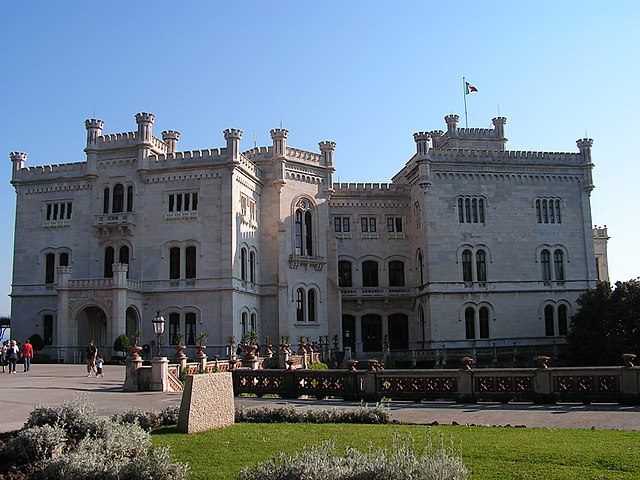
Rising above the Gargano promontory on the Gulf of Trieste is the Miramare Castle, built between 1856 and 1860 for Archduke Ferdinand Maximilian. It was designed by an Austrian architect called Carl Junker.
Archduke Maximilian and his wife, Carlotta, lived in the castle until the day he was brutally murdered in Mexico.
From the assassination, people started speculating that the castle was cursed. In fact, a certain legend claims that whoever sleeps in the castle will die in a foreign land prematurely like the Archduke.
The legend aside, the castle is a beautiful structure that looks like it just came from an Italian fairy tale. It contains more than 20 rooms decorated in Turkish and German styles. The grounds are also just as beautiful. They were re-landscaped to feature a variety of tropical trees and plants from Mexico, California, and Asia.
9. Leeds Castle
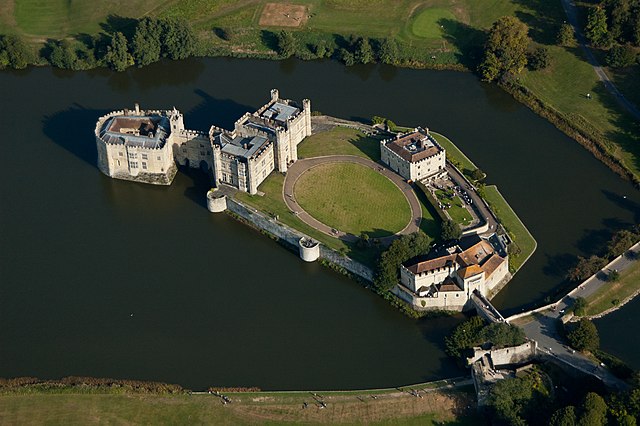
Leeds Castle is not just one of the most famous castles in Europe, but also the best preserved in England. Although a castle has existed in that location since 857, the present castle dates back to the 19th century and was opened to the public in 1976.
The castle has served many purposes, including being owned by six England queens, one of the residences of King Henry VIII, a country house, and even a retreat for affluent England families.
Today, it is a historic building that sits on more than 500 acres of land. Anyone can visit and even stay overnight as it contains some refurbished bedrooms.
One of the notable features of the castle is the local maze containing 2400 yew trees that visitors should ensure they explore.
10. Wartburg Castle
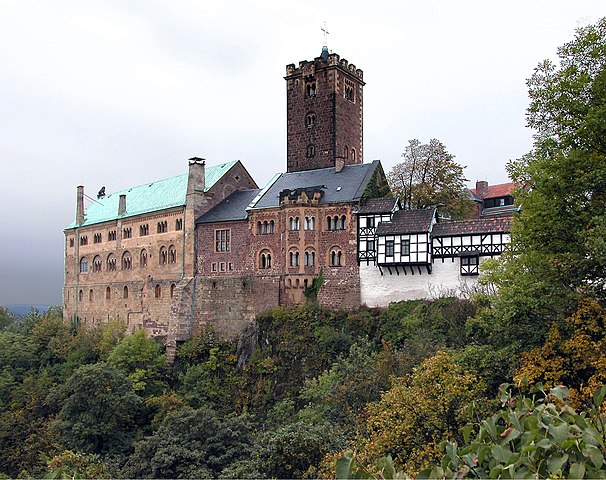
The Wartburg Castle is located in Thuringia, Germany, and overlooks the town of Eisenach. It was once home to St. Elisabeth of Hungary, and it is also where Martin Luther stayed when he translated the New Testament into German.
Even though the castle contains significant original structures dating back from the 12th to the 15th century, a lot of the interior is from the 19th century.
Today, the castle is a popular tourist destination, attracting visitors from all over the world. The major highlight of this palace is the magnificent art collection which includes artworks by Lucas Cranach, sculptures, tapestries, and renaissance works of furniture and art.

